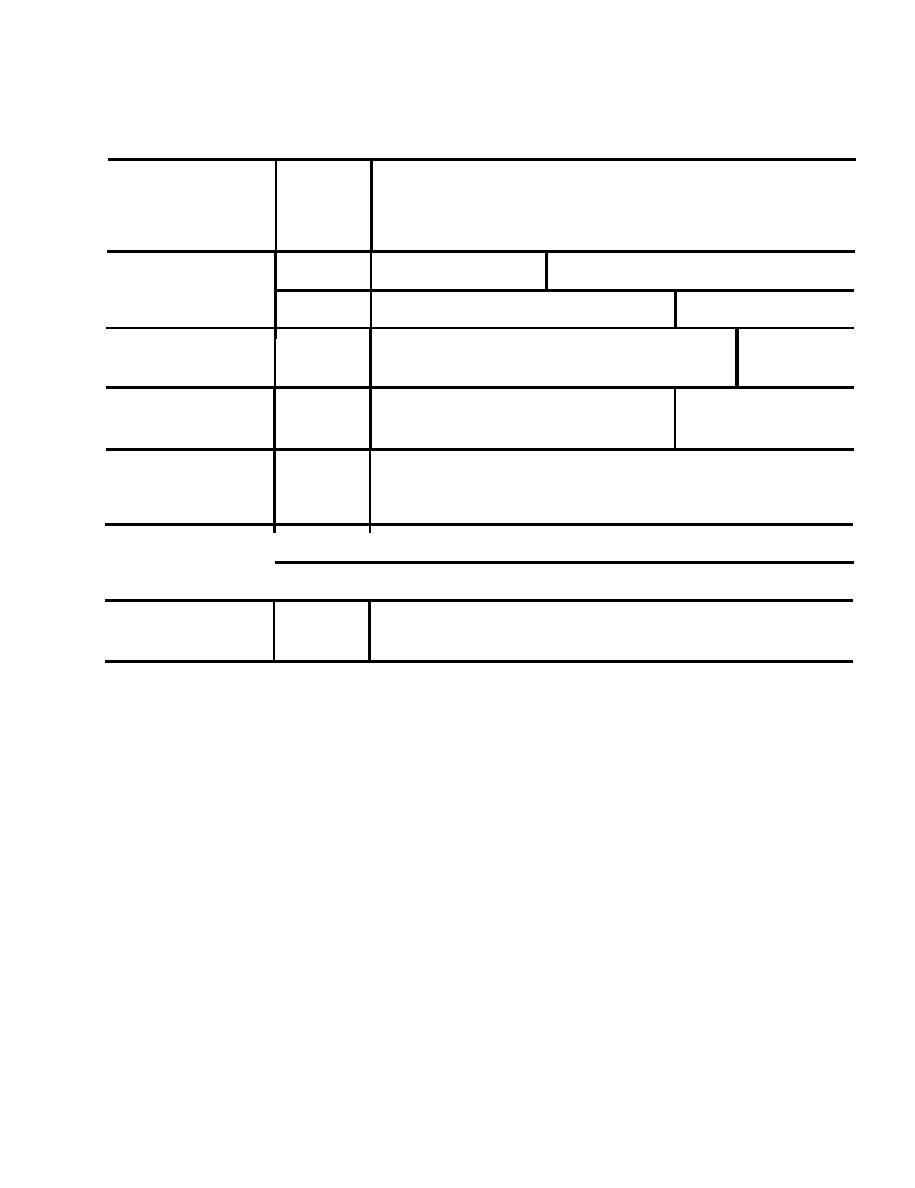
TM55-1500-345-23
MI L-C-46168B Paint
Maximum
Application Safety Procedures
Crossdraft
Type Of Painting
(Feet per
Facility
Minimum Cross-Section Air Flow Velocity (Feet per Minute)b
Minute) b
25
75
100
125
150
175+
50
Walk-in Room or Deep
50
Chemical Cartridge Respirator
Airline Respiratorc
Booth (e. g., Vehicular
Booth)
100
Airline Respiratorc
Chemical Cartridge Respirator
I
100
Chemical Cartridge
Spray Cabinet (Less Than
Airline Respiratorc
Respirator
4 ft2 Open Face Area)
100
Spray Booth (More Than
Chemical Cartridge
Airline Respiratorc
4 ft2 Open Face Area)
Respirator
Confined Spaces (e.g.,
------
Inside or Underneath
Airline Respiratorc
Vehicle)
-- --
Chemical Cartridge Respiratord
Outdoor application
I
I
------
-- Spray
Airline Respiratorc
I
I
Indoor Application
------
Airline Respiratorc/ Facility Dedication/No Unprotected Personnelf
(No Validation)
Worker protection also includes full skin cover clothing and gloves. exclusion of sensitized personnel
a
and job-related medical surveillance.
Feet per minute = ft3/min/ft 2 of open face area perpendicular to air flow.
b
Airline respirator = NIOSH/MSHA-approved Type C positive-pressure airline hose mask with full face-
c
piece.
Chemical cartridge respirator = NIOSH/MSHA-approved paint spray respirator with organic vapor car-
d
tridge(s), paint/mist prefilter(s), and full facepiece. Cartridges and prefilters are to be replaced when
one of the following occurs:
-- new workday begins
-- chemical or solvent odor is detected inside mask by wearer
-- breathing resistance becomes too great
Unprotected personnel should remain outside a 50-ft radius until 30 minutes after painting is com-
e
pleted.
f Exclusion of unprotected personnel during painting and for 30 minutes after cessation of painting.


